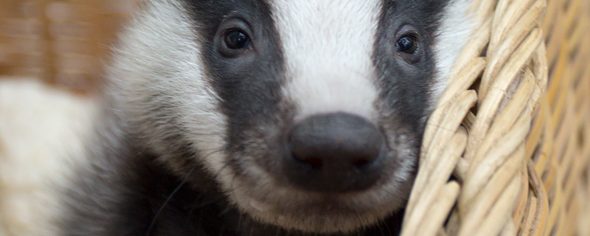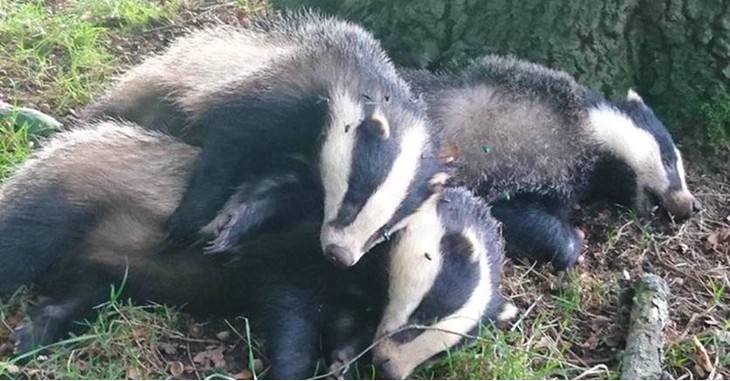
Episodic and patchy badger culling has been taking place in England over the last 50 years in an attempt to influence the bovine TB epidemic in cattle herds. And there have also been several ‘experimental’ badger cull trials over that time, the largest of which was the Randomised Badger Culling Trial (1998-2005). The current ‘proactive’ intensive badger culls, where a guesstimated 70-95% of the badger population is killed, began in 2013. We have now had 10 full years of intensive badger culling across the High Risk Area, with over 210,000 badgers reported killed. There have also been experimental badger culls in TB hotspots in at least two places in the ‘Low Risk Area’, where the aim is to kill 100% of the badgers. Killing is now done largely by free-shooting, which is deemed inhumane by the British Veterinary Association because of the cruelty involved.
How is disease control going?
With variations between areas, the general trend for the bovine TB burden in cattle has been downward. However, this decline in bTB cannot be linked to badger culling as in almost all areas bTB rates levelled off and began falling in response to the move to annual cattle testing in 2010, before badger culling began.
Importantly, there has been a further increase in the frequency of cattle testing for bTB over the same period as culling has been taking place, which has begun to remove infected cows slightly more efficiently. Cattle are now tested every 6 months using the tuberculin skin (SICCT) test, and additional testing using Gamma Interferon tests have been introduced to help remove more of undetected but infected cattle. It is this increase in frequency and efficacy of testing that has been reducing the rate of infection, not badger culling.
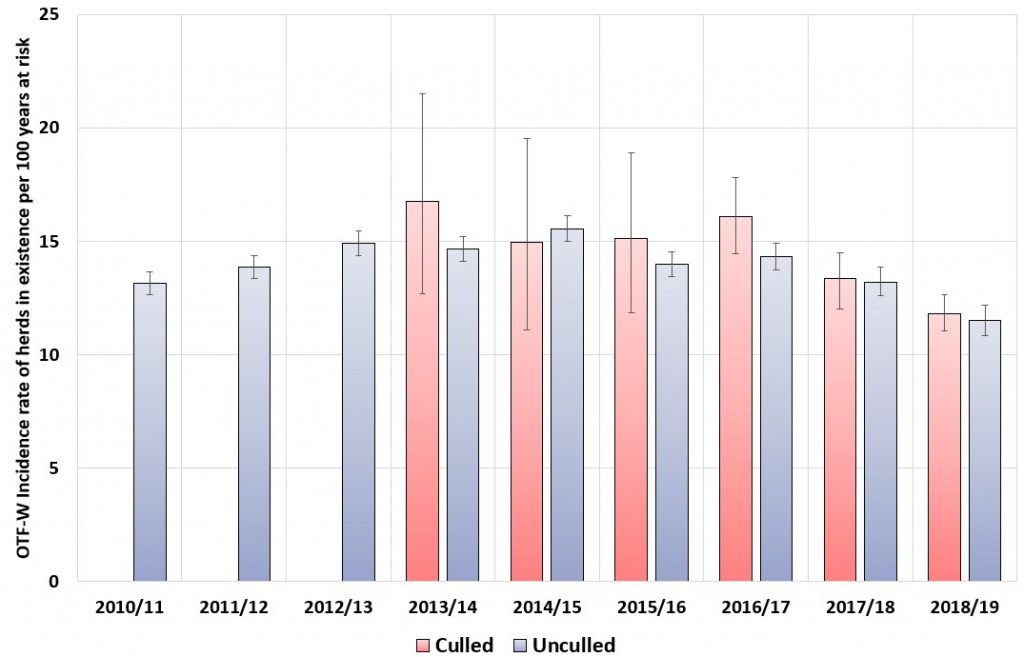
The most recent peer-reviewed and pubished analysis of the efficacy of badger culling has shown that there was no detectable difference in disease reduction between culled and unculled areas between 2013 and 2020. All that DEFRA has done is make a crude claim that badger culling works, based on reports and data that it has refused to publish or make available for many years and for spurious reasons.
What’s happening now?
Despite the near-complete government news blackout on badger culling, it is still very much government policy. It continues in 60 zones this year, reducing in number by around a third each year until 2025 when the final 23 culls will fizzle out. Natural England have once again authorised badger culling licences for autumn 2023 (announced September 7th). This will mean that up to 26,000 largely completely healthy badgers will be shot dead this year under their watch.
What are Defra’s plans for badger culling in the future?

Despite headlines back in 2020 suggesting that badger culling was to be phased out, the likelihood is that Defra is being cajouled by industry to introduce a new badger culling policy. We understand that a consultation this autumn might seek views on a ‘reactive’, or so-called ‘epidemiological’ culling policy, a method with the core approach banned by government in 2003..
If implemented, this policy would seek to kill 100% of badgers in what are being called bTB ‘cluster’ areas. Although such culls are described in new policy as for ‘exceptional use’ only, it is possible or even likely that they will be implemented wherever bTB is found in cattle and where farmers want to kill badgers. Minette Batters, President of the NFU, has made no secret of her wish to remove badgers from livestock farmland completely, and Defra listen to the wishes of the NFU. The policy does indicate vaccination for any badgers that remain following culling, but this is a policy that clearly continues to attribute significant cattle infection to badgers. This, despite consistently growing scientific evidence for this being extremely unlikely, with weak, equivocal or even manufactured evidence keeping that sentiment alive.
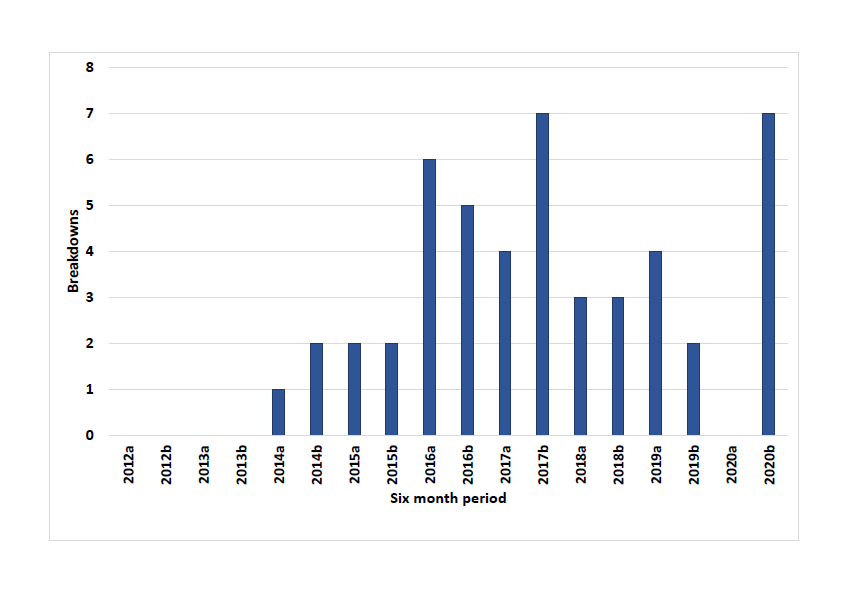
A trial of this new ‘epi-culling’ approach has been taking place in Cumbria since 2018. Despite eliminating the entire badger population over an area of around 90 sq.km. or more, herd incidents with persistent infections remain unresolved. Bovine TB infection is persistent because it comes from within the herd and from traded stock. There is no credible epidemiological route for infection from badgers. This is useful as a model of why government policy is badly flawed and misguided.
What can we do to stop this?
Years of campaigning by numerous organisations and individuals has so far;
- Led to legal challenges in the High Court of aspects of the welfare consequences of, scientific justification for, and potential ecological effects of badger culling
- Challenged the certainty of the science being used to justify badger culling with peer-reviewed analyses
- Lobbied MP’s repeatedly
- Organised over 50 rally’s and marches
- Produced many petitions of up to 300,000 signatories
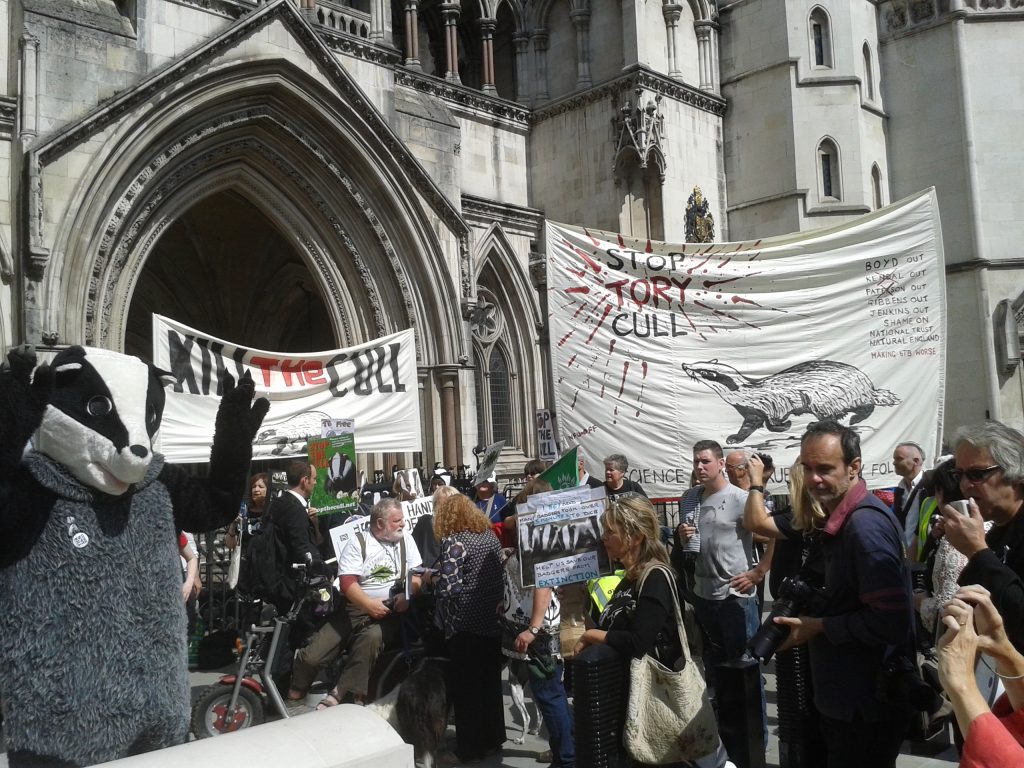
But Defra have not listened or even significantly engaged with those opposing badger culling. They are listening to the NFU, the big landowners with a powerful voice, and vets who put their own interests and industry before environment, biodiversity & animal welfare.
The increasing public awareness of climate change impacts and the immediate threat they pose have led to urgent calls to reduce meat and dairy consumption. This in turn should make government take a radical look at the farming industry in the UK, and the policies it is supporting that damage our natural environment. It looks like an impossible task with a government that has no qualms about supporting and subsidising the fossil fuel industry and counts many large land-owners with vested interests amongst its MPs.
Will an election in a little over a years’ time make any difference? Politician’s convictions seem to be increasingly fragile approaching a election, where the importance of green issues to the electorate may be unclear or even antagonize a proportion of it. Whilst polls show that voters rank the environment among the concerns of greatest importance to them, the Uxbridge byelection showed that these issues require careful handling.
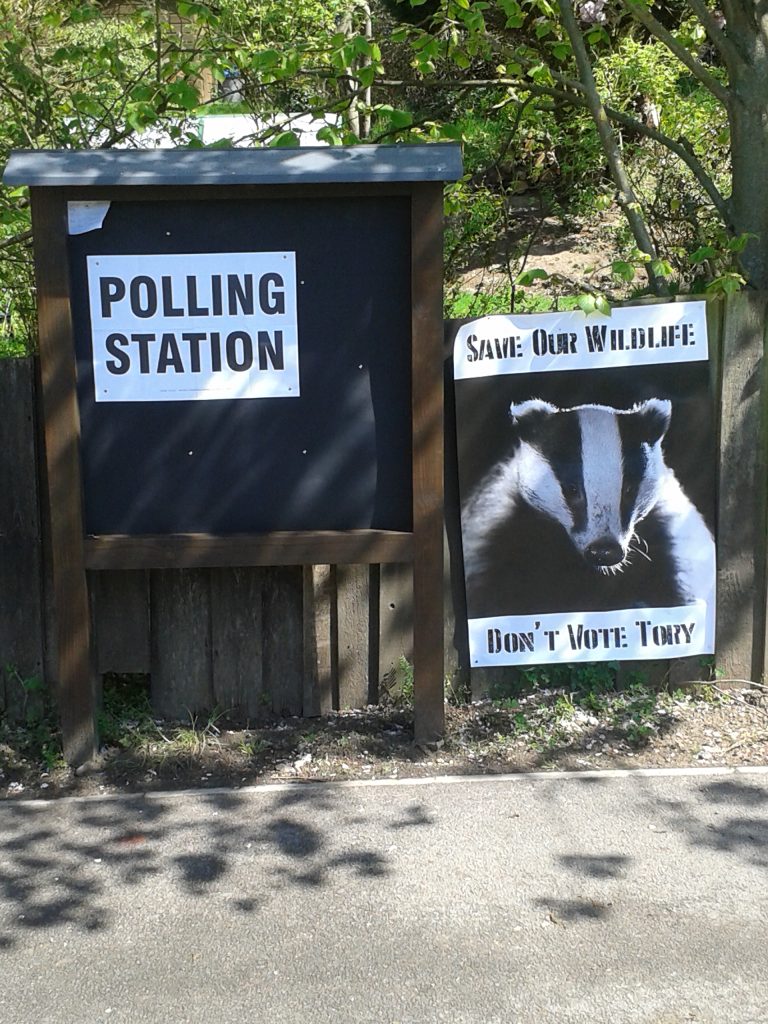
Effective caps are needed to block wastefulness and overexploitation of limited resources for trivial activities and inefficient processes. If candidates want your vote at the next election, the political parties & their candidates need to commit to a comprehensive overhaul of farming and environment policies. It is vital to make it crystal clear to them how important these issues are, or they will not commit to addressing them urgently. We may be stuck with badger culling and policies that continue to deplete our natural resources until it is too late to prevent catastrophic damage. Badger culling is just one more symptom of everything that is wrong in environmental protection in England in recent decades. Strong action is needed right now to change the way government thinks and acts. Everyone has a role to play in ensuring that those in power, and those seeking power, know how important environmental issues are, and how their response to them will affect the way we vote.
Discover more from The Badger Crowd - standing up for badgers
Subscribe to get the latest posts sent to your email.

